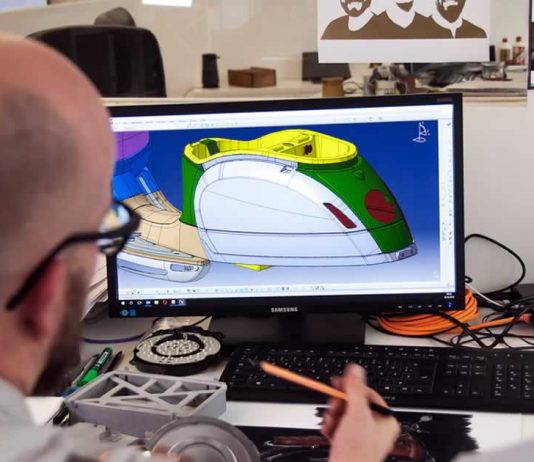When working in architectural and construction design, you are going to need something more powerful than your standard office computer. To handle the huge strain that comes with CAD software and maximize productivity, you are going to have to invest in a suitable workstation.
With there being an array of CAD workstations available on the market, it can be a daunting task to choose the best one for you. So what makes a good workstation? Let’s investigate what you must consider before making that big investment.
Contents
What is a workstation?
Think of a workstation as a more advanced desktop computer. What makes a workstation different is that it is designed with a specific purpose in mind; it could be video editing, graphic design, science or, in this case, computer-aided design.
A workstation will come with a faster processor than an ordinary computer so it can perform and run to the high standard needed to carry out tasks.
Budget
Budget may be the first thing you consider when choosing a suitable CAD workstation. Having a budget in mind before you go on your search will be very helpful in narrowing down your options. Working within your budget is the best way to save both time and money. Manufacturers will want your business – in sharing your budget with them, they will be more than happy to help you choose the best CAD workstation for you.
Processor
The central processing unit, or CPU, serves to process and execute a computer’s instructions. You may have seen the CPU referred to the ‘brains’ of the computer. When you’re carrying out very graphically demanding tasks, you’ll need a workstation with a sufficient amount of processing power.
Modern-day processors come with multiple cores, with most having at least four but some going beyond 12. The more cores you have, the more actions you’ll be able to run simultaneously. Each core serves to run numerous calculations to execute commands given by computer programs. The speed at which these calculations are performed is referred to as clock speed, or ‘frequency’, which is measured in gigahertz (GHz).
In the case of a CAD workstation, it is recommended to look for a processor with a clock speed of around 3.6 GHz with a minimum quad-core processor.
Graphics Card
In order to enhance processing power and take the strain off of the CPU, your CAD workstation will also have a graphics processing unit (GPU). It can be a part of the computer’s motherboard or processor, but it can also be part of a graphics card where it’s able to perform more powerful tasks.
The GPU’s primary use is to render images and bring graphics to your screen. If you’re looking to make some truly impressive graphics then you’ll need a decent graphics card. You are seriously penalising yourself if you have an up-to-scratch GPU. Not only will graphics render slowly, but the performance of your workstation will take a hit.
Most workstations will already have a graphics card installed. However, it’s worth making sure that it’s powerful enough in order to handle the graphically-demanding tasks you’re going to perform. It’s also important to ensure the graphics card in your CAD workstation is future-proof. You don’t want a graphics card that will soon become obsolete and unable to do the job you require. So you’ll need to look for a graphics card with the highest possible specifications within your budget.
Storage
There are two options open to you when it comes to storage: a hard disk drive (HDDs) or a solid-state drive (SSDs). Both of these store data in different ways.
The more traditional of the two are HDDs, which are metal disks with a magnetic coating. HDDs spin at high speed, reading and writing data on the disk. Typically they hold more storage than SSDs, with some capable of holding up to 10 terabytes (TB) of data.
What sets SSDs apart is that they have no moving parts – “solid-state”. The SSDs are considerably faster than the hard drive counterparts because of their electrical circuitry. The means that loading times will be faster and more tasks can be performed simultaneously. Where they fall is in the storage capacity — at the moment, they max out at around 4TB of storage. However, as technology advances, it would be reasonable to assume that storage capacity would increase over time.
Memory (RAM)
In your job, you’ll be creating numerous large files and running multiple applications concurrently. Random-access memory, or RAM, temporarily stores information that your computer will need to access. It plays an important role in your computer’s ability to perform everyday tasks and load applications. RAM is measured in gigabytes (GB).
With advancements in modern-day software, RAM becomes an increasingly important factor for CAD workstations. It’s crucial to ensure that you have sufficient RAM in order to carry out the tasks your job requires. Ultimately, the amount of RAM that you’ll need comes down to the software you use. You’ll need at least 8GB for basic CAD software, but for more advanced 3D applications, you’ll require a minimum of 16GB. You can add more RAM to a workstation so, as technology advances, you can upgrade in line with software requirements.
Summary
Choosing the right CAD workstation for you is a lengthy process but in taking your time, you’re ensuring you reach a suitable choice. With CAD workstations being so pricey, it’s crucial to remember these things to consider.
As technology is advancing at an ever-impressive rate, you’ll want to make sure that you have a CAD workstation that will get you through the years to come. Whether it’s by purchasing the very top-end workstation today or having one that is very customizable, you don’t want to have to go through the buying process every few years.
Consulting reviews is a good way to see if you’re getting a good value. So take your time and do your research.


